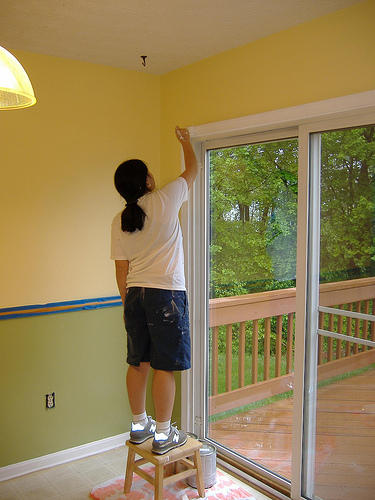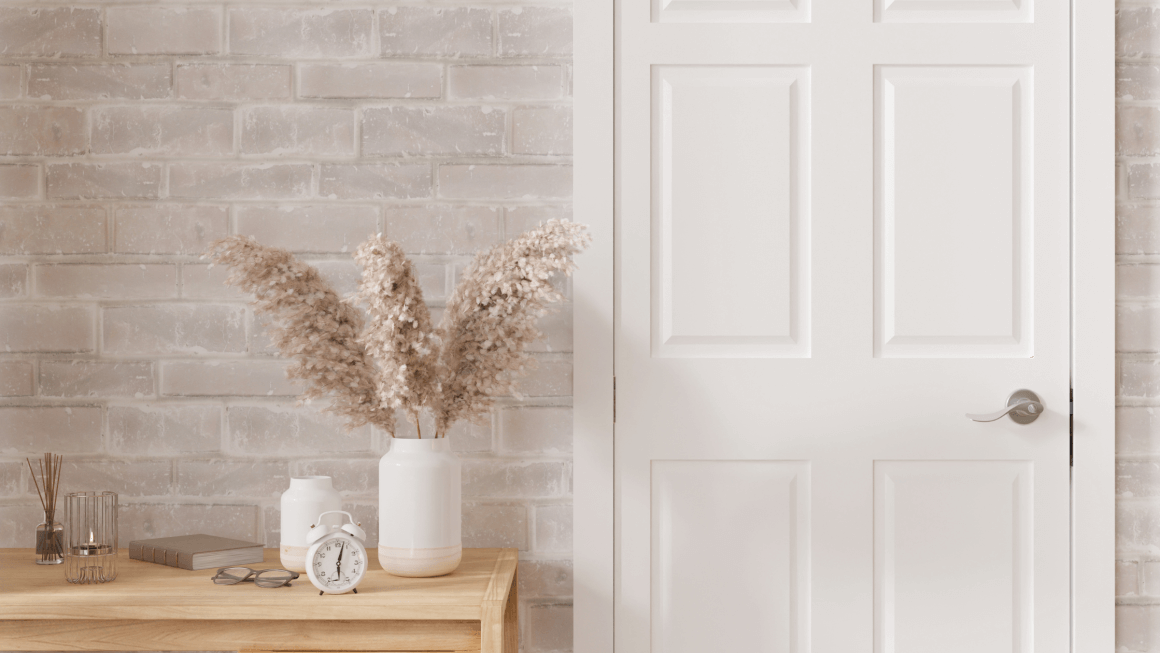Painting a door and the door frame is not a complicated job, but it is one that takes patience and careful preparation. This step-by-step guide will help you to achieve a clean and professional looking finish.
Equipment
To prepare and paint the woodwork, you will need:
- An electric sander
- Some sandpaper
- Wood filler
- A filling knife
- Paint brushes (small ones for the frame, larger ones if you are also painting the door)
- Masking tape
- Dust sheets
- A bucket
- Soap or detergent
- A sponge
- A clean cloth
- Knotting compound
- Water based wood primer
- Your chosen topcoat paint

Preparing Your Door Frame
Painting a door frame should not be a particularly messy job, but it’s still a good idea to play it safe by covering important furnishings with a dust cover, and using masking tape to protect smaller areas.
Before you can start work on painting the frame, it must be clean and smooth. Start by repairing any cracks or holes in the wood. Apply knotting compound over any knots, and fill in cracks with wood filler. If your frame has any black knots in the wood, prise them out and fill in the holes.
Once the filler and resin has dried, wipe down the old paintwork with a sponge soaked in soapy water, and then wipe it dry with a clean cloth.
Next, remove any flaking paint and sand the area smooth with fine sandpaper. Once again, wipe the area clean.
Apply wood primer to all bare areas of wood, taking care to cover mouldings and crevices. Leave the primer to dry.
Finally, it’s time to apply the paint. Check the label to find out whether you need to apply a topcoat and an undercoat or whether just one coat will do. Apply the paint by brushing it out horizontally, then drawing it along the frame in the direction of the grain. If you find that the original colour of the door shows through the paint, let this coat dry and then apply a second coat. Do not try to apply one very thick coat, because this will produce an uneven finish.
Ensuring a Professional Finish
- Load your paint brush by dipping the upper one third of the bristles into the paint, then pulling the paint brush over the lip of the tin to remove any excess paint and prevent drips.
- Do not apply lots of paint in one go, this will cause drips and leave brush marks in the finish.
- If you need to stop the job for a while, don’t leave your paint brush exposed to the air. Put it in a jar of water. This will stop the paint going hard and damaging the bristles. When you are ready to resume the job, dry off the water and you’re good to go.
- If you’re not sure whether the old paint on the door is oil or latex, choose an oil based paint for your new coat, and sand the old paint lightly to ensure that the new paint will adhere to it properly.





